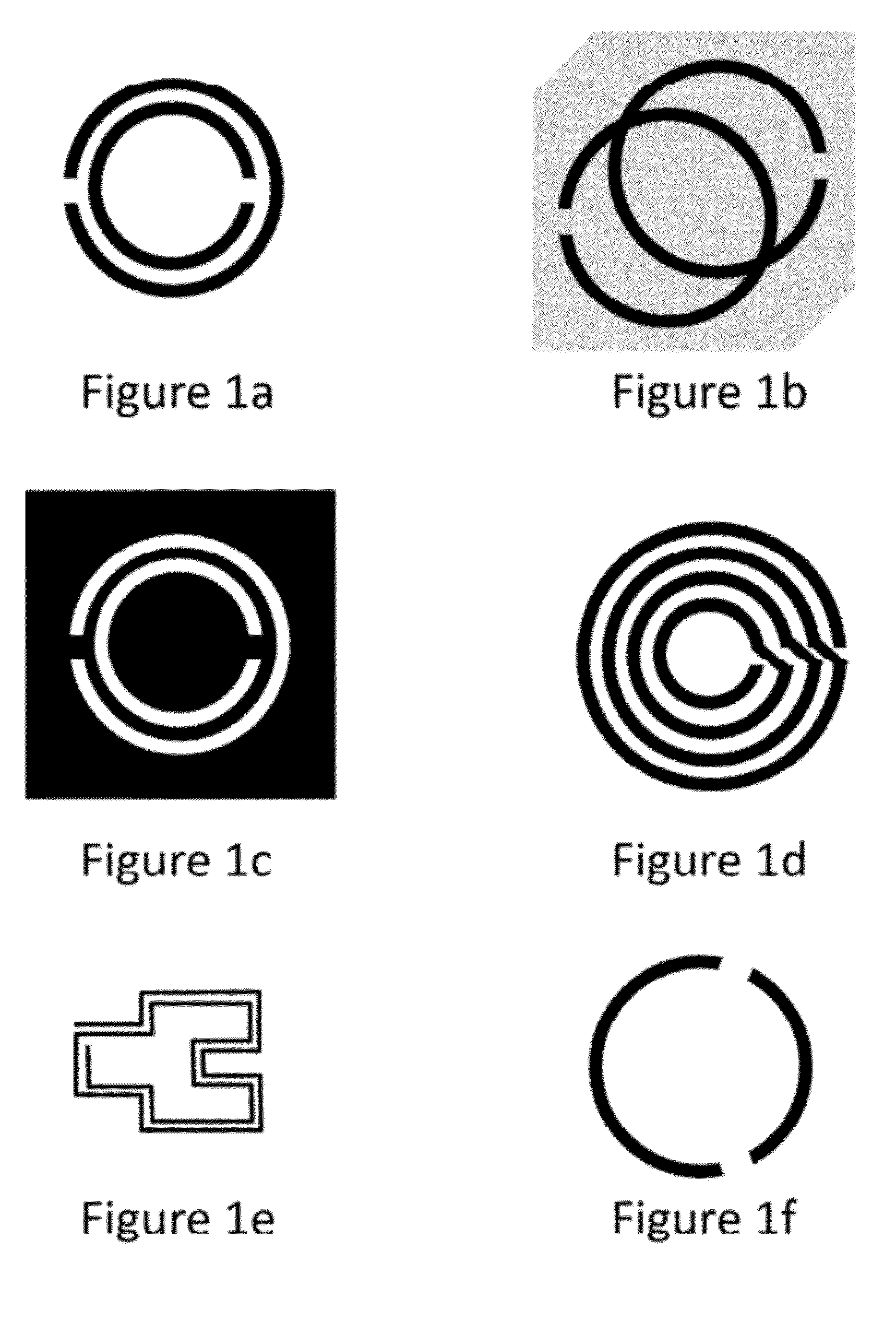Metamaterial Particles for Near-Field Sensing Applications
- Summary
- Abstract
- Description
- Claims
- Application Information
AI Technical Summary
Benefits of technology
Problems solved by technology
Method used
Image
Examples
Embodiment Construction
[0040]The invention describes a new concept for designing near-field probes. The new probe is an electrically small resonator as the details are described in the following parts. The resonator is excited by an appropriate structure depending on the shape and resonance mechanism of the resonator. To excite the resonator and measure the reflection coefficient, the probe is connected to a device such as VNA or to a more compact phase detector circuit via a transmission line. When a target interacts with the evanescent fields generated by the probe, or when the material composition of the sample under test changes as the probe scans over the sample, the change is detected by recording the resonance frequency. For a more sensitive measurement, the change in the phase of the reflection coefficient at the resonance frequency is measured. The resonance frequency shift as a result of the change in material properties or the change in geometry is given by the perturbation theory. According to...
PUM
 Login to View More
Login to View More Abstract
Description
Claims
Application Information
 Login to View More
Login to View More - R&D
- Intellectual Property
- Life Sciences
- Materials
- Tech Scout
- Unparalleled Data Quality
- Higher Quality Content
- 60% Fewer Hallucinations
Browse by: Latest US Patents, China's latest patents, Technical Efficacy Thesaurus, Application Domain, Technology Topic, Popular Technical Reports.
© 2025 PatSnap. All rights reserved.Legal|Privacy policy|Modern Slavery Act Transparency Statement|Sitemap|About US| Contact US: help@patsnap.com



